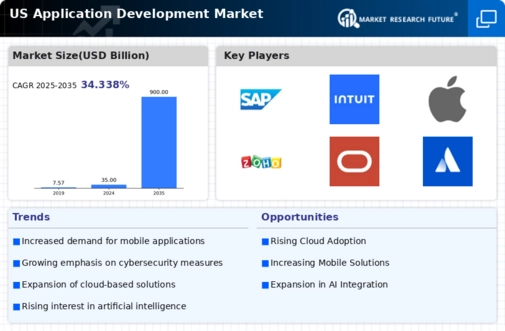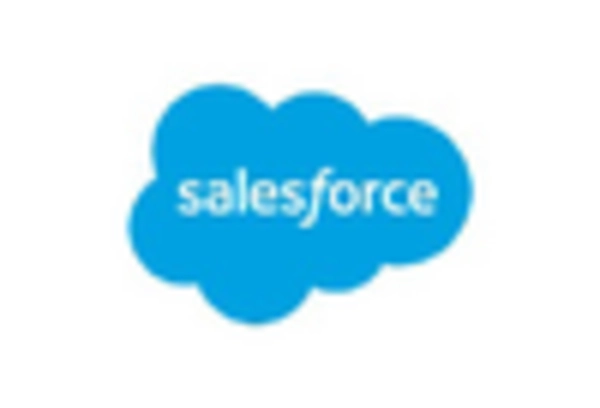Emergence of 5G Technology
The advent of 5G technology is poised to have a profound impact on the mobile application-development-platform market. With its promise of faster data speeds and lower latency, 5G enables developers to create more sophisticated and resource-intensive applications. This technological advancement is expected to drive innovation within the mobile app ecosystem, allowing for enhanced user experiences and new functionalities. As 5G networks continue to roll out across the US, the mobile application-development-platform market may witness a surge in demand for platforms that can leverage these capabilities. Developers are likely to seek tools that facilitate the creation of applications optimized for 5G, thereby expanding the market's potential.
Growing Demand for Mobile Solutions
The mobile application-development-platform market is experiencing a surge in demand for mobile solutions across various sectors. Businesses are increasingly recognizing the necessity of mobile applications to enhance customer engagement and streamline operations. According to recent data, the mobile app market in the US is projected to reach approximately $407 billion by 2026, indicating a robust growth trajectory. This demand is driven by the need for businesses to adapt to changing consumer behaviors, as mobile devices become the primary means of accessing services and information. Consequently, the mobile application-development-platform market is positioned to benefit from this trend, as companies seek efficient platforms to develop and deploy mobile applications that meet user expectations.
Focus on User Experience and Engagement
The mobile application-development-platform market is increasingly driven by the emphasis on user experience (UX) and engagement. Companies are recognizing that a well-designed mobile application can significantly enhance customer satisfaction and retention. As a result, there is a growing demand for development platforms that offer advanced UX design tools and analytics capabilities. In 2025, it is projected that businesses will allocate approximately $300 billion towards improving customer experience through mobile applications. This focus on UX is likely to influence the mobile application-development-platform market, as developers seek platforms that enable them to create intuitive and engaging applications that resonate with users.
Increased Investment in Digital Transformation
The mobile application-development-platform market is significantly influenced by the ongoing investment in digital transformation initiatives across industries. Organizations are allocating substantial budgets to modernize their operations and enhance customer experiences through mobile applications. In 2025, it is estimated that US companies will invest over $1 trillion in digital transformation efforts, which includes the development of mobile applications. This trend suggests that businesses are prioritizing mobile solutions as a critical component of their digital strategies. As a result, the mobile application-development-platform market is likely to see increased activity, with more companies seeking robust platforms to facilitate their mobile app development processes.
Rising Popularity of Cross-Platform Development
The mobile application-development-platform market is benefiting from the increasing popularity of cross-platform development solutions. Businesses are increasingly looking for ways to reach a broader audience without the need to develop separate applications for different operating systems. Cross-platform development tools allow developers to create applications that function seamlessly across various devices and platforms, thereby reducing time and costs associated with development. This trend is particularly relevant in the US, where a diverse range of devices is used by consumers. As a result, the mobile application-development-platform market is likely to see a growing number of platforms that support cross-platform capabilities, catering to the needs of businesses aiming for wider market reach.

















Leave a Comment